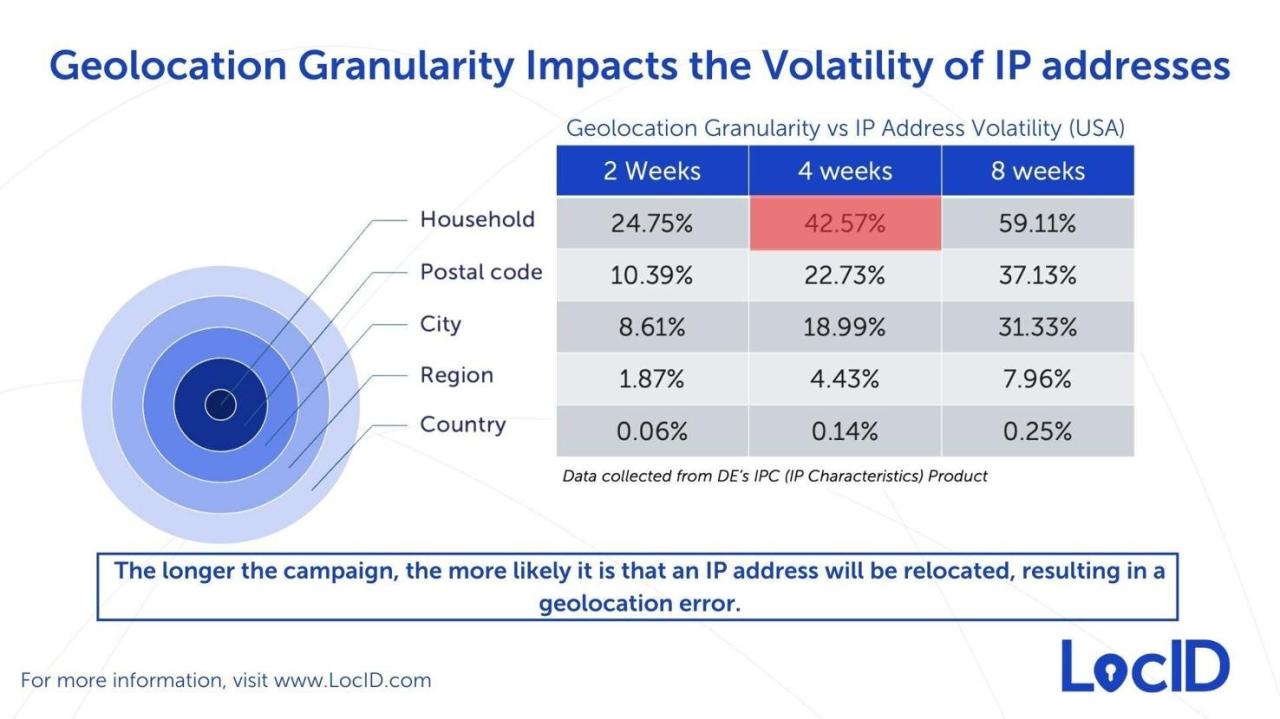
Advertising & Pioneer OTAs A Journey Through Time
Advertising and the pioneer OTAs sets the stage for this enthralling narrative, offering readers a glimpse into how travel advertising evolved alongside the rise of online travel agencies. From the early days of print ads to the digital revolution, this exploration delves into the unique strategies employed by these pioneering OTAs, highlighting their challenges and successes.
This journey through time will explore the evolution of advertising tactics, from traditional methods to the innovative strategies adopted by early OTAs. We’ll examine how they adapted to changing consumer behaviors and the crucial role of customer experience in their campaigns.
Historical Context of Advertising
Advertising, a powerful tool for shaping consumer preferences and driving economic activity, has undergone a remarkable evolution. From its humble beginnings in print media to its current dominance across digital platforms, advertising has consistently adapted to changing consumer behaviors and technological advancements. This evolution mirrors the broader societal shift towards a more interconnected and information-driven world. Understanding this historical journey provides valuable insights into the strategies employed by businesses to connect with audiences and build brand loyalty.Advertising’s early forms relied heavily on print media, utilizing newspapers and magazines to reach mass audiences.
The introduction of radio and television marked significant milestones, allowing for more engaging and visually rich advertisements to captivate viewers. These mediums facilitated the emergence of iconic brand imagery and jingles that continue to resonate with consumers today.
Evolution of Advertising Media
Advertising’s transition from print to digital has been a gradual but transformative process. The internet and subsequent digital platforms provided advertisers with unprecedented access to detailed consumer data and highly targeted advertising campaigns. This data-driven approach allows businesses to tailor messages to specific demographics and interests, maximizing the effectiveness of their campaigns.
Early Approaches to Travel and Tourism Advertising
Prior to the rise of online travel agencies (OTAs), travel advertising relied on traditional media channels. Travel brochures, magazine advertisements, and television commercials showcasing picturesque destinations and enticing travel packages were the primary means of reaching potential customers. These ads often emphasized the exotic, the luxurious, and the adventurous aspects of travel.
Advertising Tactics and Consumer Behaviors
Advertising strategies have continuously adapted to changing consumer behaviors. Early advertising focused on broad appeal and creating a desire for products or services. However, as consumer awareness and demand for more personalized experiences grew, advertising shifted towards creating a sense of community and trust with brands. This change has manifested in the rise of user-generated content and influencer marketing, where authenticity and relatability play crucial roles in building brand loyalty.
Traditional Travel Advertising Pre-OTAs
Travel advertising before the era of online travel agencies relied heavily on print media, such as travel brochures, magazines, and newspapers. These advertisements often showcased scenic destinations, luxurious accommodations, and exciting activities. Television commercials also played a significant role, depicting idealized travel experiences and promoting specific tour packages. These ads were typically targeted towards specific demographics, like families or couples, highlighting the benefits of the respective travel option.
The advertisements also emphasized the overall travel experience, from booking to arrival.
Early online travel agencies (OTAs) were pioneers in advertising travel options, and their innovative strategies significantly shaped the industry. Now, with the news that Mondovi will soon be under Emplify Health, mondovi will soon be under emplify health , we’re seeing a fascinating shift in how these businesses are marketed and presented. This change will likely spark new advertising strategies, impacting how OTAs approach travel promotion in the future.
Adaptation to Digital Platforms
The rise of the internet and digital platforms significantly transformed advertising. Online travel agencies (OTAs) revolutionized the travel industry by providing consumers with a centralized platform to compare and book travel arrangements. This shift required travel companies to adapt their advertising strategies to the digital realm, utilizing online advertising channels such as search engine marketing (SEM) and social media marketing.
This digital evolution demanded a deeper understanding of consumer behavior online and a more targeted approach to advertising.
Advertising Strategies of Pioneer OTAs
The rise of online travel agencies (OTAs) dramatically reshaped the travel industry. Early OTAs faced a unique set of challenges in establishing themselves, requiring innovative advertising strategies to attract customers and build brand recognition in a nascent digital landscape. Understanding these initial strategies provides valuable insight into the evolution of online travel marketing.The pioneer OTAs encountered several hurdles in the early days of online travel.
Competition from established travel agents was fierce, and consumers were still unfamiliar with the online booking process. Building trust and demonstrating the value proposition of booking online were paramount. Early OTAs needed to convince consumers that online booking was safe, reliable, and offered comparable or better deals than traditional methods. This required innovative marketing approaches.
Unique Advertising Challenges Faced by Early OTAs
Early OTAs faced a complex array of obstacles in their advertising efforts. Establishing brand trust and awareness amidst skepticism about online transactions was a significant challenge. They had to overcome the inherent hesitancy of customers who were unfamiliar with online booking processes and the potential risks involved. Furthermore, the limited internet penetration in certain regions presented geographical limitations for advertising reach.
Compelling consumers to adopt a new way of booking travel while competing with established travel agents required a multi-faceted marketing approach.
Strategies Employed by Pioneer OTAs
Pioneer OTAs employed a variety of strategies to attract customers and build brand recognition. They understood that their marketing efforts needed to address the specific concerns and needs of their target audience. Early marketing efforts focused heavily on demonstrating the ease and convenience of online travel booking, showcasing the wide selection of options, and highlighting the competitive pricing.
Public relations and partnerships with travel influencers also played a significant role.
Examples of Advertising Campaigns
Several notable advertising campaigns emerged during the initial phase of OTA development. One common theme was showcasing the vast inventory of travel options, from hotels and flights to car rentals and activities. Some campaigns highlighted the price comparison features, emphasizing the ability to find the best deals. Another key element was showcasing the ease and convenience of the online booking process, addressing potential customer concerns and anxieties.
Examples included user-friendly interfaces, clear instructions, and secure payment options. Target audiences varied, with some campaigns focusing on budget-conscious travelers while others targeted luxury travelers seeking unique experiences.
Key Factors Contributing to Success or Failure
Several key factors influenced the success or failure of early OTA advertising campaigns. A clear understanding of the target audience and their needs was crucial for effective messaging. Campaigns that resonated with specific customer segments, like budget travelers or adventure seekers, were more likely to generate conversions. The ability to convey trust and reliability was essential, given the novelty of online travel bookings.
Furthermore, successful campaigns focused on the value proposition, highlighting the benefits of using an OTA over traditional methods. Campaigns that lacked clarity, credibility, or a clear value proposition tended to fall short. The technical capabilities of the websites also played a role; slow loading times and difficult navigation were deterrents. Ultimately, a combination of factors determined the success or failure of these early campaigns.
Comparing Traditional and OTA Advertising

The dawn of online travel agencies (OTAs) marked a revolutionary shift in the travel industry, fundamentally altering how companies marketed their services. This shift wasn’t just about technology; it was a paradigm change in advertising strategies, forcing a comparison between traditional methods and the new digital approaches. This comparison reveals both the strengths and weaknesses of each, ultimately shaping the modern travel landscape.Traditional travel agencies, operating largely offline, relied on a different set of tools and techniques.
Early OTAs, on the other hand, leveraged the internet to create new opportunities and challenges for their marketing efforts. Examining these contrasting approaches illuminates the impact of the digital revolution on the industry.
Traditional Advertising Methods
Traditional travel agencies relied heavily on print media, such as brochures, travel magazines, and newspaper advertisements. These materials often featured visually appealing imagery and detailed information about destinations and packages. Word-of-mouth referrals and relationships with travel agents played a crucial role in driving business. The strength of this approach lay in its tangible nature and the ability to create detailed, personalized experiences for customers.
However, it was a costly and limited method, often constrained by geographical reach and the expense of print materials.
OTA Advertising Strategies
Early OTAs adopted a fundamentally different approach, leveraging the internet and digital technologies to reach a global audience. They used websites, email marketing, and online advertising to showcase travel options and package deals. This approach was characterized by its potential for scale, its ability to target specific demographics, and the use of interactive tools for customers to explore and book their trips.
Comparison of Advertising Channels
| Channel | Traditional Travel Agencies | Early OTAs |
|---|---|---|
| Print Media | Brochures, travel magazines, newspaper ads | Limited use; primarily focused on website development and online advertising |
| Television | Targeted commercials | Increased use of online video advertising and travel documentaries |
| Radio | Radio advertisements | Limited radio advertising; focused on online audio content and podcasts |
| Word-of-Mouth | Crucial for building reputation | Leveraged online reviews and social media for recommendations |
| Travel Agents | Direct partnerships with travel agents | Direct customer interaction; reduced reliance on traditional agents |
The table above highlights the stark contrast in advertising channels between traditional travel agencies and early OTAs. The shift towards digital platforms was crucial for the success of OTAs.
Impact of the Internet and Digital Technologies
The internet and digital technologies fundamentally altered the travel industry. They allowed for a wider reach, more targeted advertising, and greater interaction with potential customers. Early OTAs could easily update prices and availability in real-time, providing greater flexibility and customer experience. The ability to gather and analyze customer data also became a powerful tool for tailoring advertising campaigns and improving service offerings.
This shift towards digital strategies significantly impacted the overall cost of marketing.
The Role of Customer Experience in Advertising: Advertising And The Pioneer Otas
Early online travel agencies (OTAs) recognized the importance of customer experience (CX) in a world increasingly reliant on digital interactions. While the focus was initially on price comparison and convenience, pioneers understood that a seamless booking process and positive user experience were critical to attracting and retaining customers. They realized that simply listing destinations wasn’t enough; customers needed a positive interaction with the platform to feel confident in their choice.
This focus on CX began to differentiate early OTAs from simple price comparison sites.Beyond just listing destinations, early OTAs recognized the importance of building trust and confidence through a smooth user experience. They understood that potential customers were less likely to book if the website was clunky or confusing. This realization shaped their advertising strategies, shifting from purely price-focused to an emphasis on user-friendliness and ease of navigation.
Early marketing materials often highlighted aspects like intuitive search filters, clear pricing structures, and secure payment options, all designed to instill confidence in the online booking process.
Early OTA Emphasis on User Experience
Early OTAs focused heavily on showcasing the ease of use of their platforms. They emphasized intuitive search functionality, allowing users to quickly filter destinations, dates, and accommodation types. Clear presentation of pricing, including all applicable fees, was a key aspect, aiming to eliminate ambiguity and build trust. Furthermore, simplified booking processes, with clear step-by-step instructions, were vital components of their advertising.
They also highlighted secure payment gateways to assure customers of the safety of their transactions.
Comparison of Early and Contemporary OTA Customer Experience Features
| Feature | Early OTAs | Contemporary OTAs |
|---|---|---|
| Search Functionality | Basic filtering by destination, date, and type. | Sophisticated search with advanced filters, AI-powered recommendations, and personalized results. |
| Pricing Transparency | Displaying base price with some, but not always all, fees included. | Complete transparency, including all taxes, fees, and surcharges upfront. |
| Booking Process | Multiple steps, but relatively straightforward, often with a focus on simplicity. | Seamless, one-click booking options and integrations with payment systems. |
| Customer Support | Limited online support or phone support. | Extensive online help, FAQs, 24/7 chat support, and multiple communication channels. |
| Mobile Experience | Limited or non-existent mobile-optimized sites. | Dedicated mobile apps and responsive websites for seamless mobile access. |
Advertising Presentation of Features
Early OTA advertisements often included screenshots or diagrams of the website, highlighting key features like the search engine. Testimonials, although not as prevalent as today, were sometimes used to emphasize the positive user experience. Emphasis was placed on the simplicity of the booking process, often with visuals of the step-by-step process. Ads showcased the speed and efficiency of the search engine and the clarity of pricing.
These advertisements also focused on building trust and security, highlighting the secure payment methods. For example, a prominent display of a secure padlock icon next to the payment section would signify trust and security, assuring users of their data protection.
Analyzing the Impact of Advertising on OTA Market Share
The rise of online travel agencies (OTAs) dramatically reshaped the travel industry. A crucial component of this transformation was the effective use of advertising. Early OTAs recognized the potential of targeted marketing to capture market share from traditional travel agents and established hotels. This analysis delves into how advertising campaigns influenced the growth of early OTAs, the factors impacting their success, and the evolution of their strategies over time.Understanding the impact of advertising on OTA market share requires acknowledging the competitive landscape.
Different advertising strategies yielded varying results, influenced by factors like brand recognition, target audience, and the unique selling proposition (USP) of each OTA. This analysis will demonstrate how effective advertising campaigns played a critical role in the success of some OTAs and how adapting to changing market conditions was crucial for sustained growth.
Examples of Successful Advertising Campaigns
Early OTAs leveraged various advertising channels, including print, television, and radio, to build brand awareness and attract customers. For example, Expedia’s early campaigns highlighted its ease of use and wide selection of hotels, effectively communicating value propositions to potential travelers. Similarly, Booking.com capitalized on user-friendly features and the ability to compare prices across various providers, driving significant customer adoption.
These early campaigns effectively positioned the OTAs as convenient and efficient alternatives to traditional travel arrangements.
Factors Influencing Competitive Landscape and Success
Several factors shaped the competitive landscape of early OTAs. The emergence of the internet and increasing consumer comfort with online transactions played a pivotal role. Moreover, the ability to effectively target specific demographics with advertising campaigns proved crucial. OTAs that successfully tailored their messages to different traveler segments, whether budget-conscious travelers or luxury seekers, were more likely to gain market share.
Moreover, OTAs that focused on providing a user-friendly and seamless online booking experience achieved higher conversion rates.
Overcoming Early Market Hurdles Through Advertising
Early OTAs faced several hurdles, including establishing trust with consumers who were still somewhat hesitant about online transactions. Advertising campaigns were instrumental in overcoming these obstacles. Many campaigns emphasized security features and consumer protections, reassuring potential customers about the safety and reliability of booking through the platform. Moreover, by showcasing real customer testimonials and positive reviews, OTAs could build credibility and attract new users.
This fostered confidence in the online booking process and solidified their position in the market.
Evolution of OTA Advertising Strategies
OTA advertising strategies have evolved significantly over time. Initially, campaigns focused on building brand awareness and demonstrating value propositions. As the market matured, OTAs increasingly leveraged data analytics to personalize advertising experiences, targeting specific customer segments with tailored messages. This personalization has been crucial in fostering stronger customer relationships and driving conversions. The adoption of search engine optimization () and paid search advertising strategies also became critical in attracting organic and targeted traffic to the OTAs’ websites.
Moreover, social media marketing has become an indispensable tool in engaging with customers directly and promoting special offers.
Advertising Trends and Innovations
The early days of online travel agencies (OTAs) witnessed a dramatic shift in how travel was marketed. Gone were the days of relying solely on print and broadcast advertising. The digital age ushered in innovative approaches to reaching potential customers, impacting not only campaign effectiveness but also the very nature of the travel booking experience. This era saw the birth of a new breed of advertising tailored to the unique demands of the online landscape.The early OTAs faced the challenge of establishing brand recognition and trust in a rapidly evolving digital market.
Consequently, they pioneered innovative advertising strategies that leveraged the unique capabilities of the internet. These methods proved crucial in building brand awareness and driving traffic to their platforms. This period laid the groundwork for the sophisticated advertising strategies that characterize the OTA industry today.
Early online travel agents (OTAs) were pioneers in advertising travel options, significantly changing how we book trips. Now, consider how that advertising impacts the experience itself, like aboard the Regal Princess, where the atrium and spa are front and center aboard regal princess atrium and spa are front and center. This focus on key features highlights the importance of targeted advertising for travel companies in today’s competitive market.
Modern OTAs continue to build on this foundation by showcasing the best aspects of destinations and cruises.
Key Advertising Trends
The early OTAs adopted a multifaceted approach to advertising, recognizing the importance of various channels to reach their target audience. Search engine optimization () was critical, ensuring their websites ranked highly in search results. Pay-per-click (PPC) advertising, particularly on search engines like Google, was another key component. These targeted ads allowed OTAs to reach users actively searching for travel options, resulting in higher conversion rates.
Early online travel agencies (OTAs) were pioneers in advertising travel options, drastically changing how we book trips. Thinking about how those early advertising strategies shaped the industry, I’m reminded of the demanding role of an executive chef, like the one featured in a day in the life hal executive chef. Their meticulous planning mirrors the meticulous work required to craft effective travel campaigns, ultimately impacting the way travelers experience their adventures.
The innovative advertising methods of the pioneer OTAs paved the way for the modern travel landscape.
Moreover, the OTAs embraced banner advertising on relevant websites, using eye-catching visuals to grab attention and drive traffic to their landing pages.
Innovative Advertising Formats and Technologies
Early OTAs experimented with various advertising formats to capture user attention. Interactive maps and dynamic pricing tools were used to showcase destinations and highlight competitive deals. These tools provided users with a more immersive experience, enabling them to visualize their travel options and compare pricing in real-time. Promotional videos, often showcasing breathtaking travel destinations, were another popular format.
These visual representations effectively communicated the allure of travel and inspired potential customers.
The Role of Social Media in OTA Advertising Evolution
Social media platforms emerged as significant channels for OTA advertising, especially in the later stages of the early OTA era. OTAs began using Facebook and other social networks to engage with potential customers. Targeted ads based on user demographics and interests allowed OTAs to precisely reach their desired audience, optimizing marketing spend. They leveraged social media’s interactive nature to encourage user-generated content, fostering a sense of community and building brand loyalty.
Early online travel agencies (OTAs) were pioneers in advertising travel options, and now, companies like Adventuresmith are building on that legacy. For example, Adventuresmith announces Hawaii cruise offering , showcasing how modern advertising leverages the internet to reach a broad audience. This innovative approach is crucial for reaching travelers and staying competitive in the ever-evolving landscape of travel advertising for OTAs.
By leveraging user reviews and testimonials, OTAs could build credibility and showcase real-world travel experiences. User-generated content often proved highly persuasive, as it provided an independent perspective on travel experiences.
Case Studies of Successful Advertising Campaigns

Early online travel agencies (OTAs) faced a unique challenge: establishing brand recognition and trust in a nascent digital market. Successful advertising campaigns were crucial to this process, building awareness and driving bookings. These campaigns weren’t just about showcasing deals; they were about crafting a narrative that resonated with travelers and differentiated the OTAs from competitors.Understanding the specific approaches employed by these pioneers offers valuable insights into effective advertising strategies for today’s digital landscape.
Successful OTAs leveraged a combination of innovative strategies, including targeted messaging, compelling visuals, and strategic partnerships.
Analyzing Specific Campaigns
The effectiveness of early OTA advertising campaigns hinges on a clear understanding of their target audience, the message they conveyed, and the channels they used. Examining these factors provides a roadmap for modern advertising strategies.
Expedia’s “Book Your Adventure” Campaign
Expedia, a prominent early OTA, employed a broad marketing strategy that aimed to capture a wide range of travelers. Their “Book Your Adventure” campaign emphasized the vast range of destinations and travel options available through their platform. This campaign targeted a diverse audience, from budget travelers to luxury seekers. The campaign leveraged a mix of television commercials, print advertisements, and early online banner ads.
Early online travel agents (OTAs) revolutionized advertising, targeting specific demographics with tailored travel packages. Their innovative strategies directly influenced how businesses, like the largest architectural firms 2, largest architectural firms 2 , might approach their own marketing campaigns. Ultimately, these pioneering OTAs laid the groundwork for modern advertising strategies, showcasing how visual storytelling and targeted marketing could dramatically impact consumer behavior.
This multi-faceted approach ensured broad reach and visibility.
Priceline’s “Name Your Price” Campaign
Priceline’s “Name Your Price” campaign was a groundbreaking concept that challenged traditional travel pricing models. The campaign communicated the unique value proposition of Priceline, highlighting its ability to negotiate deals and provide travelers with competitive pricing. The core message centered on consumer empowerment and value for money. This campaign primarily utilized television advertising and targeted those seeking budget-friendly travel options.
Booking.com’s Focus on Community and Trust
Booking.com, from its inception, focused on building a strong community and fostering trust amongst users. Their advertising campaigns emphasized user reviews and testimonials, positioning the platform as a reliable source for travel information. This approach targeted travelers seeking authentic experiences and recommendations from other travelers. Their campaigns heavily relied on digital marketing channels, including social media and search engine optimization.
Summary Table of Key Elements and Results, Advertising and the pioneer otas
| OTA | Target Audience | Messaging | Channels | Impact on Market/Brand Perception |
|---|---|---|---|---|
| Expedia | Diverse, seeking adventure | Wide range of destinations | TV, Print, Online | Established brand recognition, broad reach |
| Priceline | Budget-conscious travelers | Competitive pricing, deals | TV, Online | Created a unique value proposition, innovative pricing model |
| Booking.com | Travelers seeking authenticity and reviews | User reviews, community | Digital Marketing (, Social Media) | Built trust and community, positioned as a reliable resource |
Future of Advertising in the OTA Landscape
The online travel agency (OTA) advertising landscape is rapidly evolving, driven by technological advancements and shifting consumer preferences. As the industry matures, OTAs must adapt their strategies to remain competitive and connect with a diverse range of travelers. This necessitates a deep understanding of future trends, including emerging channels, personalized approaches, and the transformative potential of AI and machine learning.The future of OTA advertising hinges on the ability to anticipate and respond to changing consumer behaviors.
This requires a proactive approach to innovation, embracing emerging technologies, and adapting to the increasingly sophisticated expectations of travelers. Successful OTAs will leverage data-driven insights to tailor their campaigns, delivering targeted messages that resonate with individual preferences.
Future Advertising Channels and Strategies
OTAs need to expand beyond traditional channels and explore new avenues for engagement. This includes integrating advertising into immersive virtual reality experiences, leveraging interactive travel planning tools, and incorporating augmented reality elements for showcasing destinations and accommodations. Furthermore, strategic partnerships with travel influencers and creators will be crucial in reaching niche audiences and building brand trust. Social media marketing will continue to be vital, but will increasingly focus on authentic, experience-driven content and interactive elements.
Personalization and Data-Driven Approaches
Personalization is no longer a desirable feature, but a necessity in today’s advertising world. Sophisticated data analytics will enable OTAs to understand individual traveler preferences, travel styles, and past booking history to create hyper-personalized ad campaigns. This involves utilizing data from various sources, including social media interactions, browsing history, and past travel bookings, to provide targeted recommendations and offers.
For example, an OTA could tailor an ad campaign for a traveler who frequently books luxury accommodations in Europe with a specific interest in historical sites, showcasing similar properties and destinations.
The Role of Artificial Intelligence and Machine Learning
AI and machine learning are poised to revolutionize OTA advertising. AI-powered systems can analyze vast amounts of data to identify trends, predict user behavior, and optimize ad campaigns in real-time. For example, an AI system can dynamically adjust ad copy, pricing, and targeting based on real-time market conditions and user engagement. Furthermore, AI can automate the process of creating and optimizing ad creatives, improving campaign efficiency and ROI.
Machine learning algorithms can identify patterns in customer data to personalize offers and experiences, improving customer satisfaction and loyalty.
Final Conclusion
In conclusion, the story of advertising and the pioneer OTAs is one of innovation and adaptation. From their initial struggles to establish market presence to the innovative campaigns that propelled them to success, these early OTAs laid the groundwork for the online travel industry we know today. Their strategies, successes, and failures offer valuable lessons for businesses navigating the ever-evolving digital landscape.
FAQ Insights
What were the key challenges faced by early OTAs in their advertising efforts?
Early OTAs faced the challenge of establishing trust and brand recognition in a new digital space. Competition was fierce, and convincing consumers to book travel online rather than through traditional channels required innovative and persuasive advertising.
How did the internet and digital technologies impact advertising strategies for OTAs?
The internet and digital technologies allowed OTAs to reach a wider audience and target specific demographics more effectively. This led to more personalized and data-driven advertising campaigns.
What are some examples of innovative advertising formats used by pioneer OTAs?
Early OTAs utilized various innovative advertising formats, including banner ads, email marketing, and early forms of search engine optimization. They also experimented with interactive elements and multimedia content within their ads.
What is the role of personalization in future OTA advertising?
Personalization is crucial. Future OTA advertising will likely rely heavily on data-driven insights to tailor campaigns to individual traveler preferences and needs.






